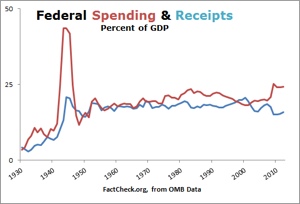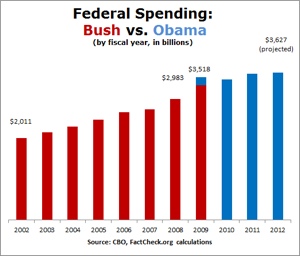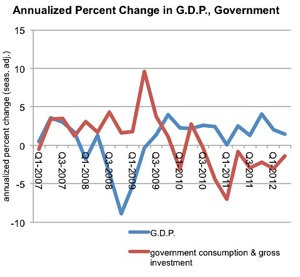California is still the state that creates the most businesses and is poised to create even more in 2013.
In the coming weeks, you are going to see desperate States sending their hard-earned cash trying to lure California businesses away from the State. They will try. They will win-some. They will lose many more. Why? Because California is an awesome place to start and grow your business.
I apologize in advance for my ethnocentric-like praise of California. I do so not to denigrate the other 49 amazing states in our great nation. We live in the most diverse country in the world and in many ways each state is like its own unique country – which is the secret-sauce in our international success. I would not change a thing. It just seems like no other state has such a bullseye on it like California does. Rooting against California seems to occur more often and I see no benefit to the continuation of this practice.
Therefore, today I rise in support of California because California seems to be oft-vilified for many things it is not. It is high-time you heard someone defend our great state for what it actually is.
California is the 7th largest economy in the world. Although New York and Texas are great states with GDP of over $1.1 trillion each, (amazing economic figures), California has GDP of $1.9 trillion! Last year you may have heard that in 2012, Texas produced the most net new jobs in the country at close to 300,000 (awesome numbers I must say). Untrue. Texas did not produce the most net new job; California holds that honor. What you did not hear is California actually produced the most net new jobs in 2012 at over to 300,000.
Innovation is the key to building a sustainable future for the United States. Which state do you suppose generated the largest number of patent applications and was awarded the largest number of patents? Yes, California. If you have a business creating an alternative energy solution, which state do you think is the largest market for your solution? California. If you have business that needs a market for your products (whether consumer or industry focused) California is the best place to introduce your products because California is home to the most diverse population of people from all over the nation and the world in every economic sub-section.
What is the largest agricultural state? California. The largest defense infrastructure? California. Alternative energy capital of the nation? California. Largest number of K-12 schools, community colleges and higher education colleges and universities? California. Largest cross-border trade? California. Most innovative new water technology? California. Why water? You have to be really creative if you want to live in a desert. If the world needs it, California may be the best place to create and distribute it.
You may have read stories proclaiming California a lost state. The state government is said to be controlled by liberal socialists that can not pass budgets on-time and can never balance the budget. Unions are supposedly killing the state. Environmental rules are supposedly choking off industry. It has been stated that the energy industry can’t build energy plants. Newspapers have written that as a result of high-personal income taxes, every millionaire is making plans to leave for sunny pastures in Florida. Texas Governors make the annual pilgrimage to California with tax-breaks in hand – attempting to lure California businesses to the Lone Star State. Texas believes that Texas must be swallowing up all of California’s major corporations. Even education is said to have suffered due to bloated teacher salaries and benefits making the quality of education is so poor, graduates can not find jobs. It is even assumed crime must be rampant and the streets are polluted with gang-bangers flooding over the border with Mexico. All must be lost.
What a crock!
While there may be elements of truth in the stories retelling the projected demise of California, the real story of California is this: these stories are mostly lies and old news. Kind of the difference between watching television with rabbit-ears versus simultaneously streaming 3 stations of live-television on your smart-phone. The “Califaters” (cal-i-faters : defined as people that make a living hating-on California) need to catch up to the “now” and stop living in the past. California is a state the is helping bring America back from the 2008 bottom and as California goes, so goes America.
We all need a strong California and cheering for California’s success is great for the entire country.
California is a great place to innovate, protect our national interests, start a business, receive an education, learn a trade, start a career, recreate, entertain, and raise a family.
Are there areas where California must improve. Yes. The great news for California is everybody in the state is working towards continuous improvement because California believes it can and must constantly do better.
What makes California so strong? What is our secret-sauce? I say it is “Migration”. Immigration from nations of the world and migration from the other 49 states. The entire world wants to come to California. When your state is the magnet for the best and the brightest; when your state is the largest economic marketplace, encourages risk, innovation, education and the ability to live open and free, your state will be the economic engine for a entire nation …. for the entire world!
In California we often hear the phrase “no one is actually FROM California”. While not completely accurate for obvious reasons, what is true is the fact so many wonderful souls choose to leave other states and other countries for a shot at the California dream. Even more awesome is these very souls can choose to stay or leave and seem comfortable doing so. Even those that have “fled” California seem to still find a way to come back to the state. Heck, do you know how many candidates for President still have homes in California?
Don’t get me wrong by implying we are the only state that benefits from Immigration and Migration. We just seem to use the constant flow of new migration to in-turn drive innovation and economic development in the state which in-turn contributes to our outstanding GDP numbers.
A few truths: personal income tax rates are too high in California. At a low of 10.3% on incomes below $250k and a high of 13.3% on incomes over $680k, no one paying those rates is smiling. However, let us be very clear, California is a state that produces tons of people earning a lot of money because California has the most dynamic economy in the world. As a matter of fact, California is the 7th largest economy in the WORLD. If you are a Capitalist and an Entrepreneur, California is the magnet that pulls you towards it. Besides, California is a great place to raise a family and that is something every employer must consider not just for themselves, but for the quality-of-life of their valuable employees and their families.
Here is what is most amazing about California. While no one wants to pay more in taxes, ever, all tax increases in the State must be approved by voters. The more focused the tax, the higher the threshold, 50.01 for general revenue taxes, 55 – 66 2/3 for specific taxes. When California wants to tax itself, it is the residents that have to vote it in. In other words, Californians have to choose to be the highest taxed state in the nation if they want to pay for that which they believe makes California … California.
While personal income taxes are too high and sales-tax rates high as well, our property taxes are stable and moderate. Proposition 13 guarantees property taxes may rise past a fixed percentage and as a result a Californian will never lose their home due to out-of-control property tax escalation. This is a benefit of great value, especially to older American property owners.
As a business owner, I would prefer to live in a state with no personal income taxes, no property taxes, and no sales taxes; yet still provides a great education opportunities, access to jobs, a high quality of life, safety, security, and great weather. I would also prefer to eat limitless french fries without gaining weight. It is clear I am simply not going to get all of my wishes met in California or any other state for that matter. Yet California is the place so many choose to call home and locate their businesses.
However, I would like to see California live within its fiscal means, lower the tax burden and become more competitive in its ability to attract, retain and grow businesses. We need elected officials to means-test any new revenue or spending. We need to make sure any spending has a sustainable funding source or never be approved in the first place. Regulation needs to be smart and necessary and include sunset provisions to ensure the regulation is actually producing the desired result in order to continue or sunset. We need to stop looking at residents to be the big piggy-bank for stupid and necessary legislation.
I will use my position as a business owner, father and Californian to work with all elected officials to make California the best place to grow a business. As businesses grow and succeed, they grow the economy and the economic-cycle churns out prosperity. As with laws that reformed our insurance industry, workers compensation and our pension system in San Diego, all of us can work together to keep California successful if we are doing it for the right reasons – making California the best place to grow a business, educate a workforce, enjoy a high-quality-of-life, and raise a family.
If you want to resolve California’s budget issues, grow employment. If you want to grow employment, attract and retain those businesses that can succeed elsewhere but choose to succeed in California. We have to stop acting as the marketing arm of other states who can cherry-pick California businesses because we keep by creating our own self-defeating, knuckle-headed rule-making that only serves to hurt our economy.
California has terrific assets that can attract and retain every kind of entrepreneur that wants to live the American dream. Let us pull together and make sure we stop the self-inflicted wounds which inhibit economic prosperity and work on removing any unnecessary roadblocks to success. Growing our economy is how we raise wages, increase environmental sustainability, create new jobs, fund education, increase safety and security, build preventative health care models, and preserve open-space. It is by building the best economic model that we deliver the best social structure which benefits all and continues to draw the best and brightest to our state. It is not about pitting business against the people. It is all about the synergy of the people working together to grow and sustain a great business-climate for the benefit of all people in the state.
Our proximity to the Pacific as well as our proximity to Mexico, our largest trading partner, give me hope that California is poised to grow Asia-based companies as well as bring international manufacturing from China back to our Maquiladora’s in Baja-California. By working closely with Mexico, we can make the San Diego region and economic juggernaut. The acceptance and growth of our Mega-Region prospects gives me hope that a California Renaissance is close at hand. It is failed thinking to believe the United States has lost it manufacturing base forever, As long as we continue to innovate, we will need a place to manufacture and our neighbor to the South has everything we need. We can design the robots that make the robots that manufacture the Tesla or anything else we can divine.
So, when you see an out-of-state Governor on television telling you that California is dead, remember what California is and what California is not. Hell, let’s at least thank him for the spending he produces every time he visits our great state. It makes total sense for Governors from the other 49 states to do everything they can to attract California businesses because California is doing the same thing to them every day by being the economic engine of the nation. Every business in California needs to demand our state is doing everything it can to retain them and continue to attract others to the state. A successful economy benefits every business in the state.
Therefore, rumors of the demise of California have been greatly exaggerated. Cali is back ; in truth we never left! California is the state that creates the future of business, innovation and education. Tell a friend.





